ISS: MLM (Multi-purpose Laboratory Module) Nauka
Non-EO
Human Spaceflight
Quick facts
Overview
| Mission type | Non-EO |
| Launch date | 21 Jul 2021 |
MLM (Multi-purpose Laboratory Module) Nauka of the Russian Segment on the ISS
Nauka Development European Robotic Arm Launch References
Scheduled for launch on a Proton rocket on 15 July 2021, the Nauka (that’s Russian for “Science”) Multi-purpose Laboratory Module, MLM, was designed to dock to the International Space Station, ISS, to give the outpost a plethora of new capabilities and to resume the assembly of the station's Russian Segment after a decade-long hiatus. In development for nearly a quarter of a century, the 20-ton Nauka will be Russia's largest spacecraft since the launch of the Zvezda Service Module to the ISS in 2000. 1)
The Nauka module will become the sixth Russian-built long-term component of the International Space Station, ISS, and the third element of the outpost relying on the Proton rocket for launch. Nauka was designed to provide a new scientific potential for the Russian Segment, but also expand its technical capabilies and, possibly, even become the core of a future new station.
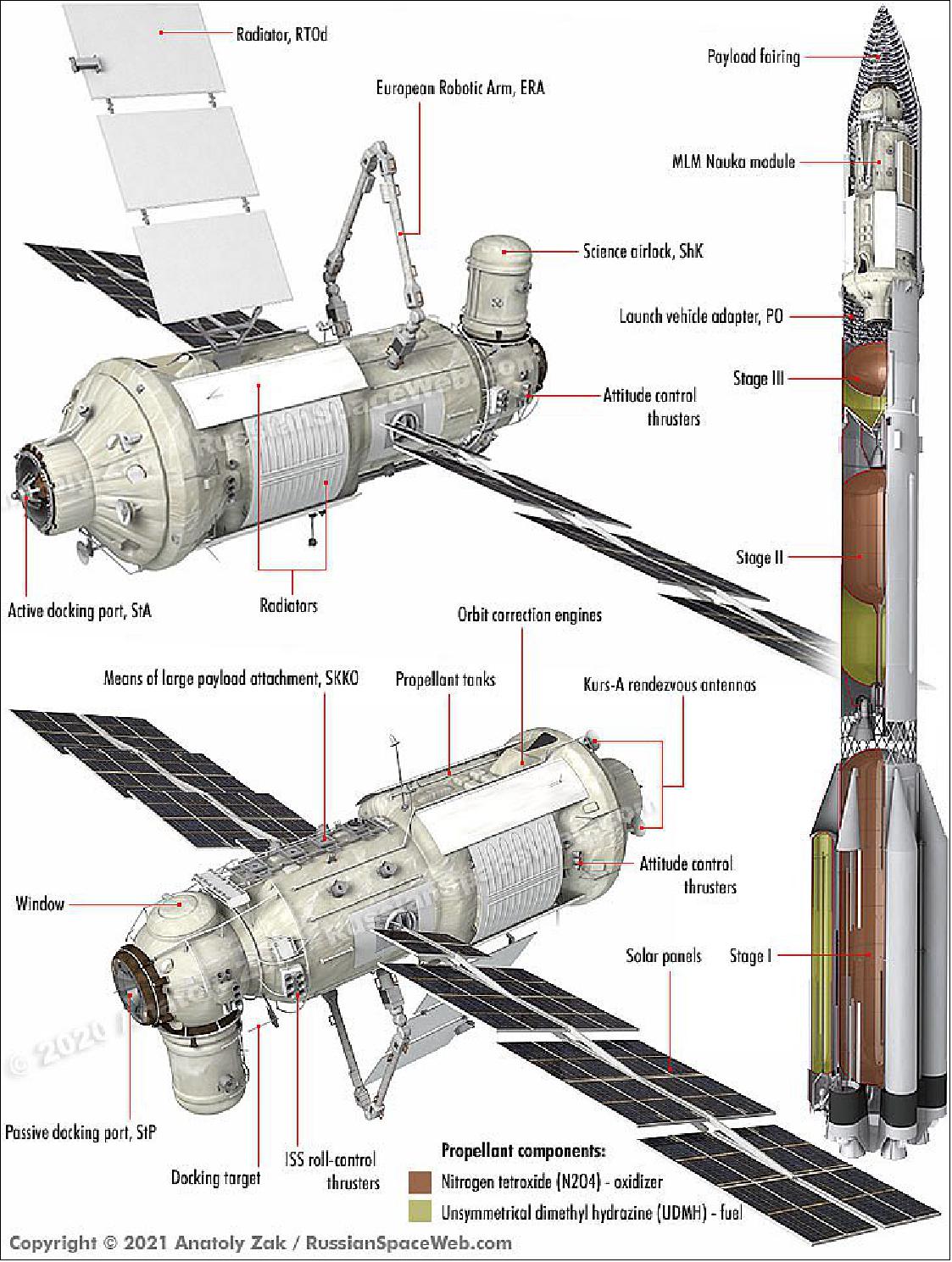
Development Status of Nauka and Preparations for Docking on ISS
• June 2, 2021: Delivered in 2001, the Pirsmodule will be removed from the ISS no earlier than 17 July 2021 to make room for the new Nauka science module on the Russian segment of the outpost. 2)
- Officially beginning at 05:53 UTC/01:53 EDT, the 2 June spacewalk saw the two Russian cosmonauts leave the Poisk module — also known as Mini-Research Module 2 (MRM2) — with a variety of tasks.
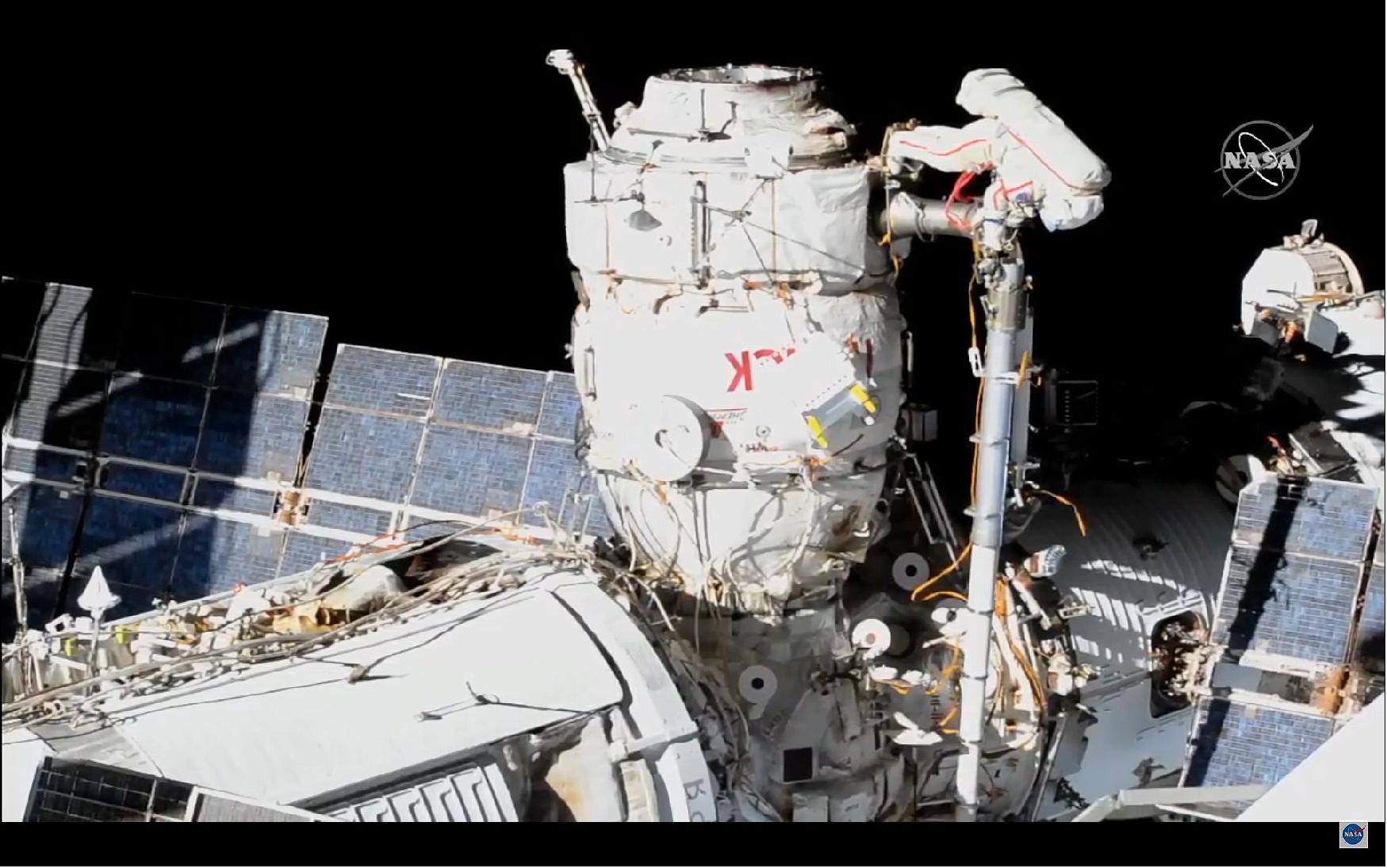
- The main focus, however, was completion of decommissioning activities related to the Pirs docking compartment, work that was successfully completed across several orbits of the Earth.
- After leaving the airlock of the Station’s Poisk module, Novitsky and Dubrov expertly worked through a variety of small issues that are not altogether uncommon on spacewalks — such as bolts not behaving as expected.
- First up, the two cosmonauts took a pressurized container out of the airlock with them and temporarily installed it on the Zarya module. From there, they were able to remove a failed fuel flow regular on Zarya and seal it inside the pressurized container — which was unbolted later in the EVA and jettisoned, or thrown, overboard for natural decay and destruction in Earth’s atmosphere.
- Pirs is now officially decommissioned ahead of being undocked by a Progress vehicle and sent to its doom via a (controlled) destructive re-entry.
- This type of “throw-it-away” element for Station spacewalks/repairs is somewhat common on both the Russsian and US-European-Canadian-Japanese-segments for elements that are either too large or too hazardous to be brought back into the Station or that can’t be taken away by visiting cargo craft.
- Novitsky and Dubrov then moved the Strella crane from Pirs and firmly attached it to Poisk while also working to disconnect the cabling that has allowed the module’s critical KURS automated rendezvous system to function.
- With Progress MS-16 already docked to Pirs in preparation for the module’s removal, the automated docking system is no longer needed.
- The cables were carefully disconnected from Pirs and temporarily reconnected to the Zvezda module, where controllers in Mission Control Moscow were able to test them and confirm they were still functioning.
- After the Nauka module arrives later this year, another spacewalk will reconnect the cables to Nauka’s rendezvous system to bring its docking port online.
- Work then continued with the cosmonaut duo removing a gap spanner between Pirs’ spacewalk ladder and Zvezda. Once that task was complete, Pirs was considered “decommissioned” — the first ISS module to reach this status.
- Mission Controllers near Moscow then evaluated the EVA’s timeline and concluded that the final task could go ahead as planned from a timeline and crew fatigue standpoint — with both Novitsky and Dubrov noting they felt fine to continue.
- This final activity saw the cosmonauts install two experiment packages outside Poisk, including one to study microflora and another to monitor a variety of materials and the effects on them of the low Earth orbit environment.
- With those experiments installed, Novitsky and Dubrov collected their tools and reentered the Poisk module. With hatch closure, the two completed the sixth ISS EVA of the year at the International Space Station and the 238th spacewalk overall in support of the outpost.
- Russian EVAs are timed from hatch open to hatch close; as such, Poisk’s hatch was closed at 13:12 UTC/09:12 EDT, concluding the venture at a Spacewalk Elapsed Time of 7 hours 19 minutes.
- If all goes to plan, the module that will take Pirs’ docking place on the Station will launch no earlier than 15 July on a Proton rocket from the Baikonur Cosmodrome in Kazakhstan. Once Nauka is safely in orbit and initial checkouts are performed and the health of the module is confirmed, Russian mission controllers will use the Progress MS-16 cargo craft to remove Pirs from the Station.
- The module’s removal will be a somewhat mirror of its arrival. Launched with a modified Progress propulsion section, Pirs autonomously docked to the Zvezda service module’s nadir, or Earth-facing, port before the modified Progress propulsion unit undocked itself from Pirs and flew away.
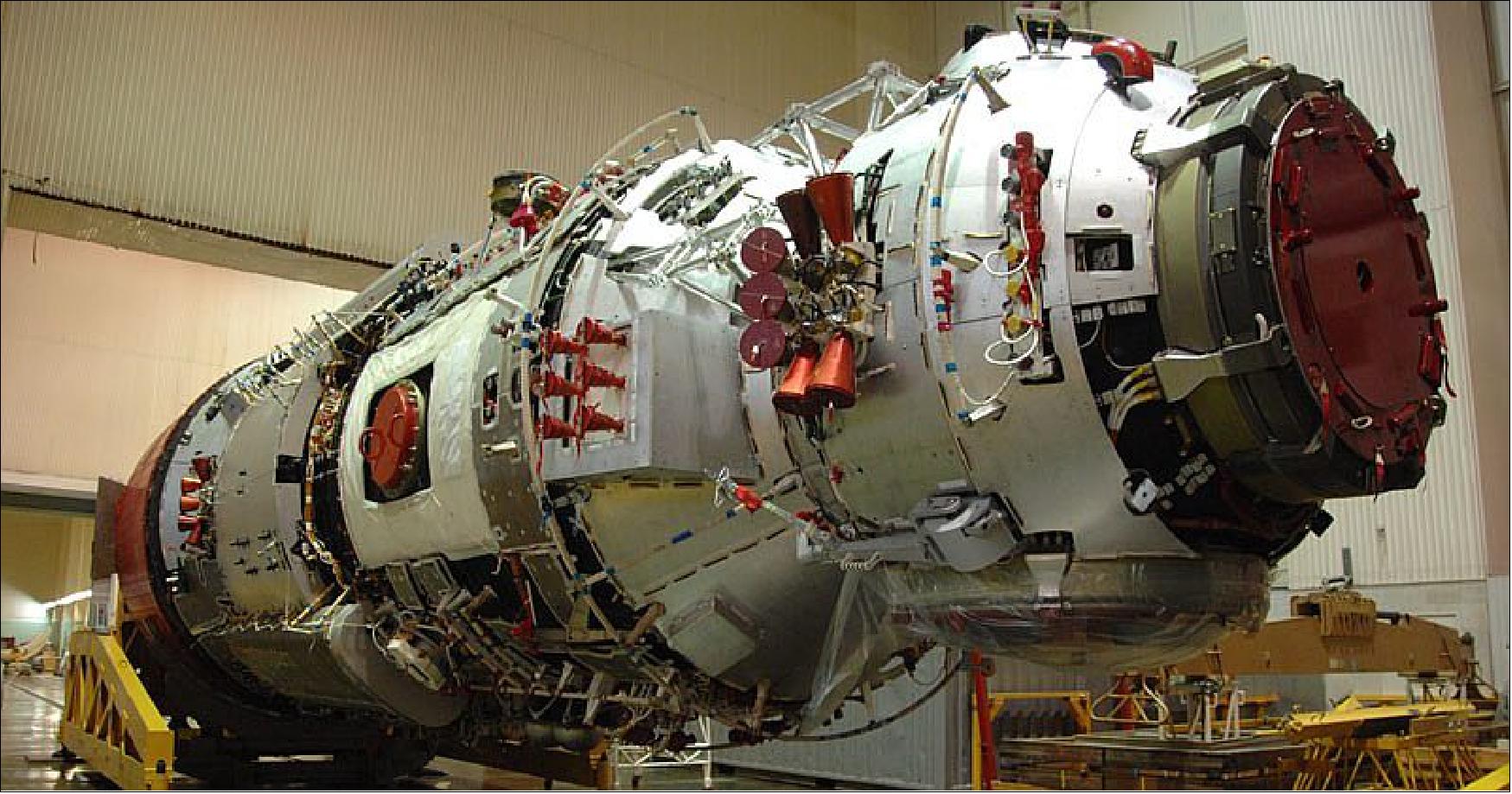
- Now, the entire Progress MS-16 craft, which launched on 15 February 2021 and delivered thousands of kilograms of supplies to the Station, will be used to remove Pirs. Instead of commanding the hooks connecting Progress to Pirs to retract, the docking hooks that have held Pirs to Zvezda for 20 years will be commanded to retract instead, and Progress will pull Pirs away from the Station as it leaves.
- In this way, Progress MS-16 will not undock from the Station, but rather Pirs will undock — with Progress MS-16 then maneuvering the still-mated pair away from the ISS before safely deorbiting the module for a destructive end-of-life plunge into Earth’s atmosphere.
- A few days later, Nauka will maneuver itself up to the ISS, rendezvous, and dock itself to the now-vacant port on Zvezda.
- Meanwhile, prior to Pirs’ departure and Nauka’s arrival, the seventh and eight EVAs of the year will occur later this month when European Space Agency astronaut Thomas Pesquet and NASA astronaut Shane Kimbrough conduct two spacewalks from the Quest airlock to install the first two IROSA, International Space Station Roll-Out Solar Arrays.
- The new arrays will boost the ISS’s power generation capability, which has naturally been decaying since the original set of eight solar array wings were delivered between December 2000 and March 2009 over the course of four Space Shuttle missions: STS-97/Endeavour, STS-115/Atlantis, STS-117/Atlantis, and STS-119/Discovery.
• August 25, 2020: A long-delayed Russian science module was transported by train from Moscow to the Baikonur Cosmodrome in Kazakhstan earlier this month for a final series of electrical tests and outfitting before launch to the International Space Station next year. 3)
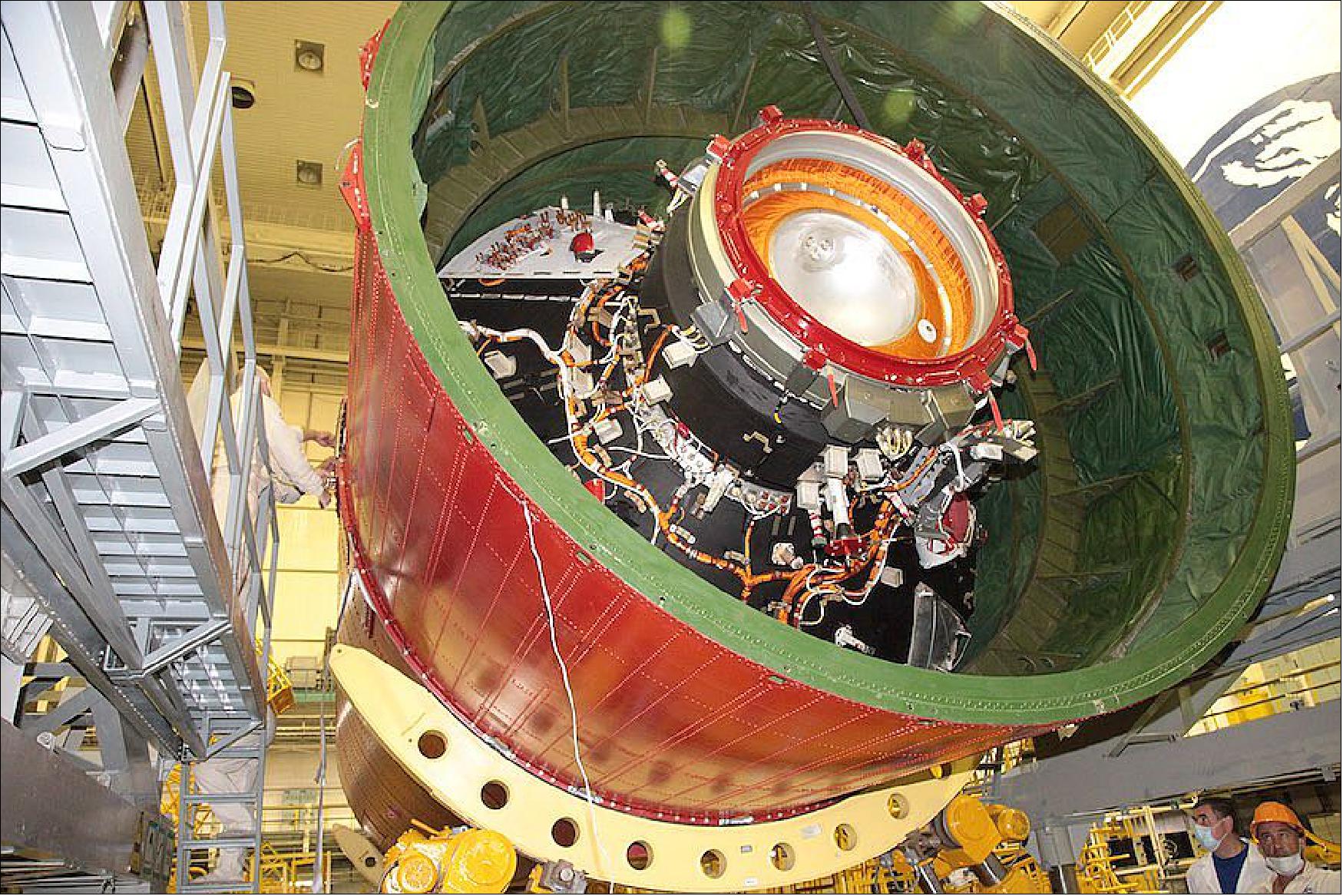
- The bus-sized Nauka research module — also known as the MLM (Multi-purpose Laboratory Module) — has been in development for more than 20 years, originally as a backup for Russia’s Zarya module, the first element of the space station to launch in 1998. Russia said in 2004 that the backup to Zarya would be converted into a lab module for launch in 2007.
- But delays have kept the Russian lab on the ground for years. Engineers at Energia, the prime contractor for Russia’s human spaceflight program, found flaws in the module’s propulsion system in 2013. The module was returned to Khrunichev, its manufacturer, for lengthy repairs that delayed Nauka’s launch several more years.
- Nauka, which means “science” in Russian, will be the largest Russian element to join the International Space Station since the launch of the Zvezda service module in 2000. Designed to support scientific experiments, the module measures about 13 meters long and will have a mass of ~20 metric tons when it blasts off on top of a Russian Proton rocket from Baikonur.
- The last Russian pressurized element of any size launched to the space station was the Rassvet docking module, which was delivered by a NASA space shuttle in 2010.
- Roscosmos, the Russian space agency, announced in July that the Nauka module passed vacuum testing designed to check for leaks in the craft’s pressure shell, docking system and hatches. The vacuum testing also checked the readiness of the module’s propulsion and thermal control systems, according to Roscosmos.
- “The Nauka module development began over 20 years ago based on the Zarya backup module – the FGB-2,” Roscosmos said in a statement. “The terms of the module readiness shifted repeatedly requiring modernization of some elements.”
- Nauka departed its manufacturing facility at Khrunichev in Moscow on Aug. 11 bound for the Baikonur Cosmodrome. The module completed its rail journey Aug. 19, and technicians began unpacking the laboratory from its shipping container to prepare for a series of “complex tests,” Roscosmos said.
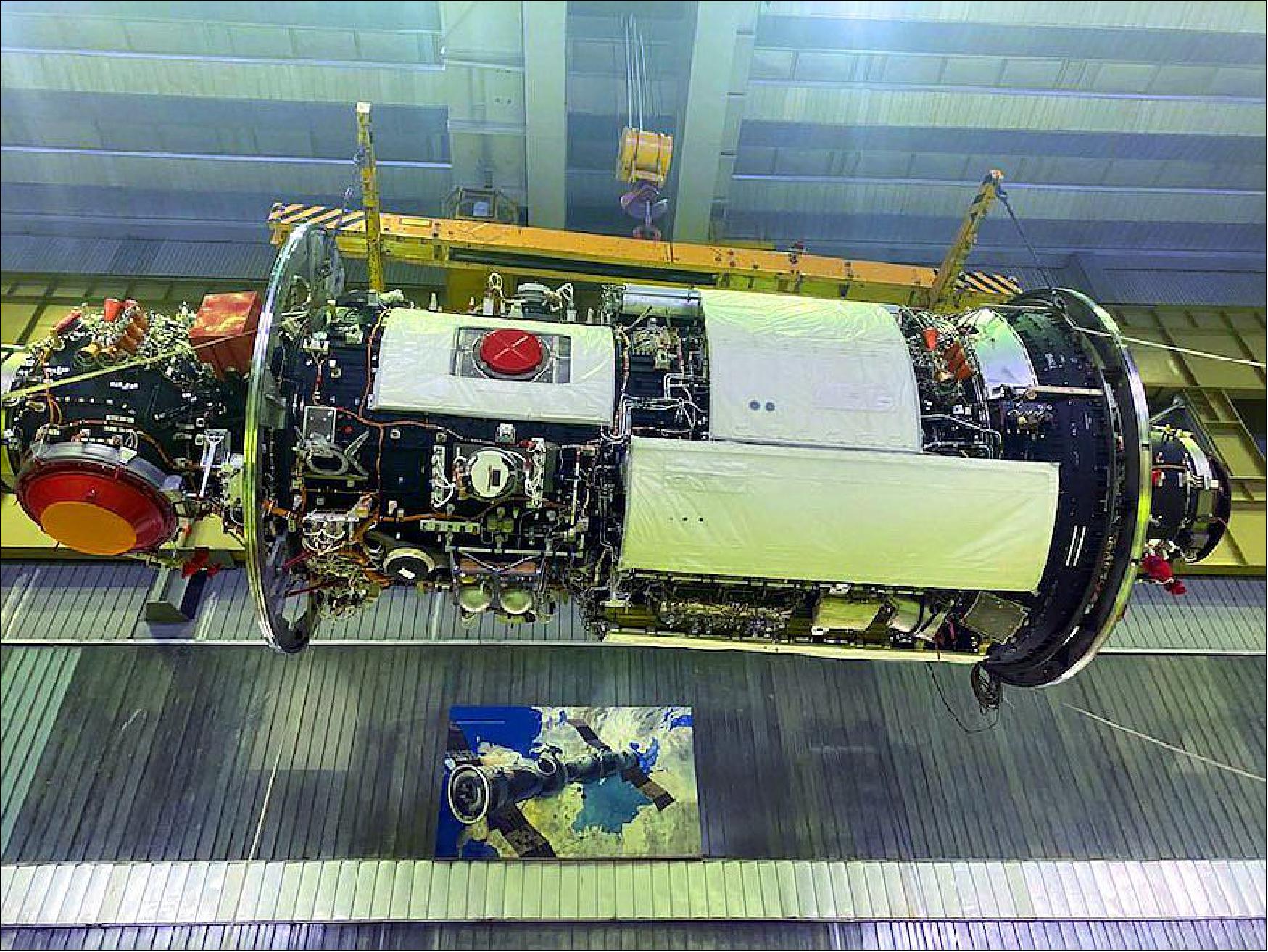
- Energia and Khrunichev teams at Baikonur will perform quality checks on the Nauka module and commence a series of more than 750 electrical tests. Ground crews will also install external shielding, Nauka’s power-generating solar panels, and a European Robotic Arm on (ERA) the outside of the lab module.
- The testing and outfitting will take about nine months, setting the stage for Nauka’s launch on top of a Russian heavy-lift Proton booster in the spring or summer of 2021.
- Full-scale development of the European Robotic Arm began in 1996, and the arm has been in storage more than a decade. Originally planned for launch on a NASA space shuttle, the 11.3 meter arm will join Canadian and Japanese robotic manipulators outside the space station, assisting with the movement of external payloads and helping astronauts with spacewalks.
- After launch, the Nauka module will dock with the nadir, or Earth-facing, port of the space station’s Russian Zvezda service module. That location has been occupied by the Russian Pirs docking compartment since 2001.
- The Pirs module will be discarded before Nauka’s arrival using a departing Russian Progress cargo freighter, which will guide itself back into Earth’s atmosphere to burn up on re-entry with the Pirs compartment.
ERA (European Robotic Arm)
The European Robotic Arm is the first robot that can ‘walk’ around the Russian part of the International Space Station. 4)
The European Robotic Arm is the first robot that can ‘walk’ around the Russian part of the International Space Station. ERA has a length of over 11 m, and can anchor itself to the Station in multiple locations, moving backwards and forwards around the Russian segment with a large range of motion. Its home base will be the Multipurpose Laboratory Module, called ‘Nauka’.
Astronauts will find in the European Robotic Arm a most valuable ally – it will save them precious time to do other work in space.
The crew in space can control ERA from both inside and outside the Space Station, a feature that no other robotic arm has offered before.
100% made-in-Europe, this intelligent robotic arm consists of two end effectors, two wrists, two limbs and one elbow joint together with electronics and cameras. Both ends act as either a 'hand' for the robot.
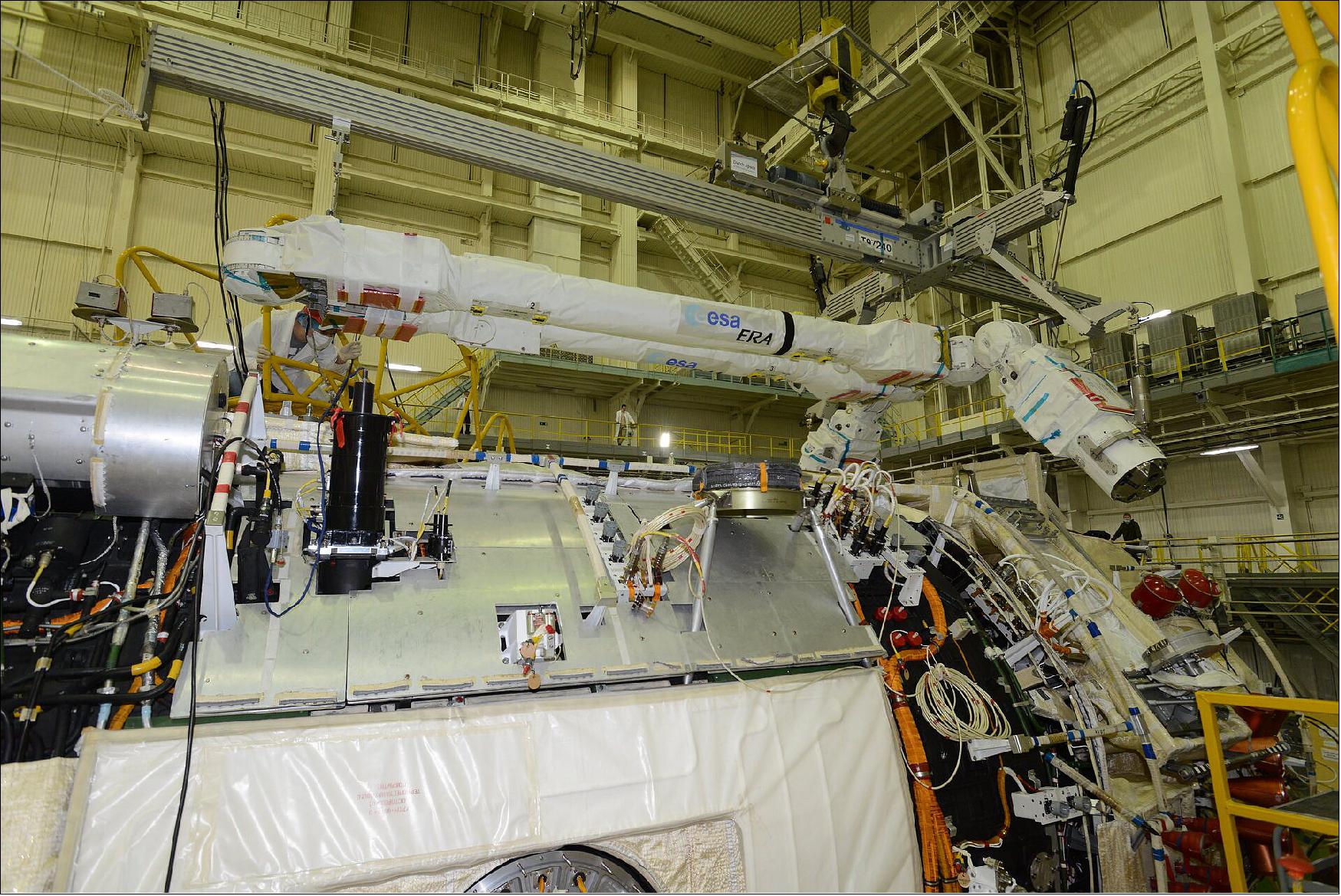
ERA Development Status
• May 20, 2021: ERA, designed by Fokker Space, is a robotic arm planned to be attached to the Russian Segment of the International Space Station during 2021. As the main Robotic arm of the Russian segment of the International Space Station, it will provide installation and removal of target loads on the surface of the station and monitoring of the state of the external surface of the station, as well as remotely controlled movement of astronauts in a portable workplace during spacewalks. 5)
- In accordance with the schedule of work during the installation of the ERA on the locking units, high-precision control of the position of the manipulator in the folded configuration and comprehensive tests of the fixing tools on the module housing were carried out.
- Further work on the technical complex will be carried out by specialists of RSC Energia and the Yuzhny Space Center (branch of the Center for Operation of Ground Space Infrastructure Objects, part of Roscosmos) as part of the regular preparation for launch. During this period, it is planned to install solar panels, place the delivered goods and weigh the module, assemble the space head, refuel the module tanks with fuel components and the overall assembly of the Proton-M space rocket.
- The "Nauka" (Russian for 'science') multipurpose laboratory module, developed by RSC Energia in cooperation with the Khrunichev State Research and Production Space Center, is a component of the International Space Station (ISS) that is expected to expand the functionality of the Russian segment of the ISS.
- The launch of Nauka, initially planned for 2007, has been repeatedly delayed for various reasons. In May 2020, Nauka was reported to be planned for launch in the second quarter of 2021, after which the warranties of some of Nauka's systems will expire. As of 4 February 2021, Nauka is planned for launch on 15 July 2021 at 5:16 pm UTC and will be docked on 23 July 2021 at 4:28 pm UTC to Zvezda's nadir port.
Launch
The Russian “Nauka” Multipurpose Laboratory Module (MLM) launched 21 July 2021 at 14:58:25 UTC on a Proton-M rocket from the Baikonur Cosmodrome in Kazakhstan, beginning an eight-day flight for an automated docking to the Russian segment of the complex. “Nauka”, the Russian word for science, will replace the Pirs Docking Compartment, which will undock from the station July 23 to be deorbited by an unpiloted Progress supply ship after 20 years of service at the orbital outpost. The Multipurpose Laboratory Module will serve as a research lab, docking port and airlock for Russian segment spacewalks in future years. 6)
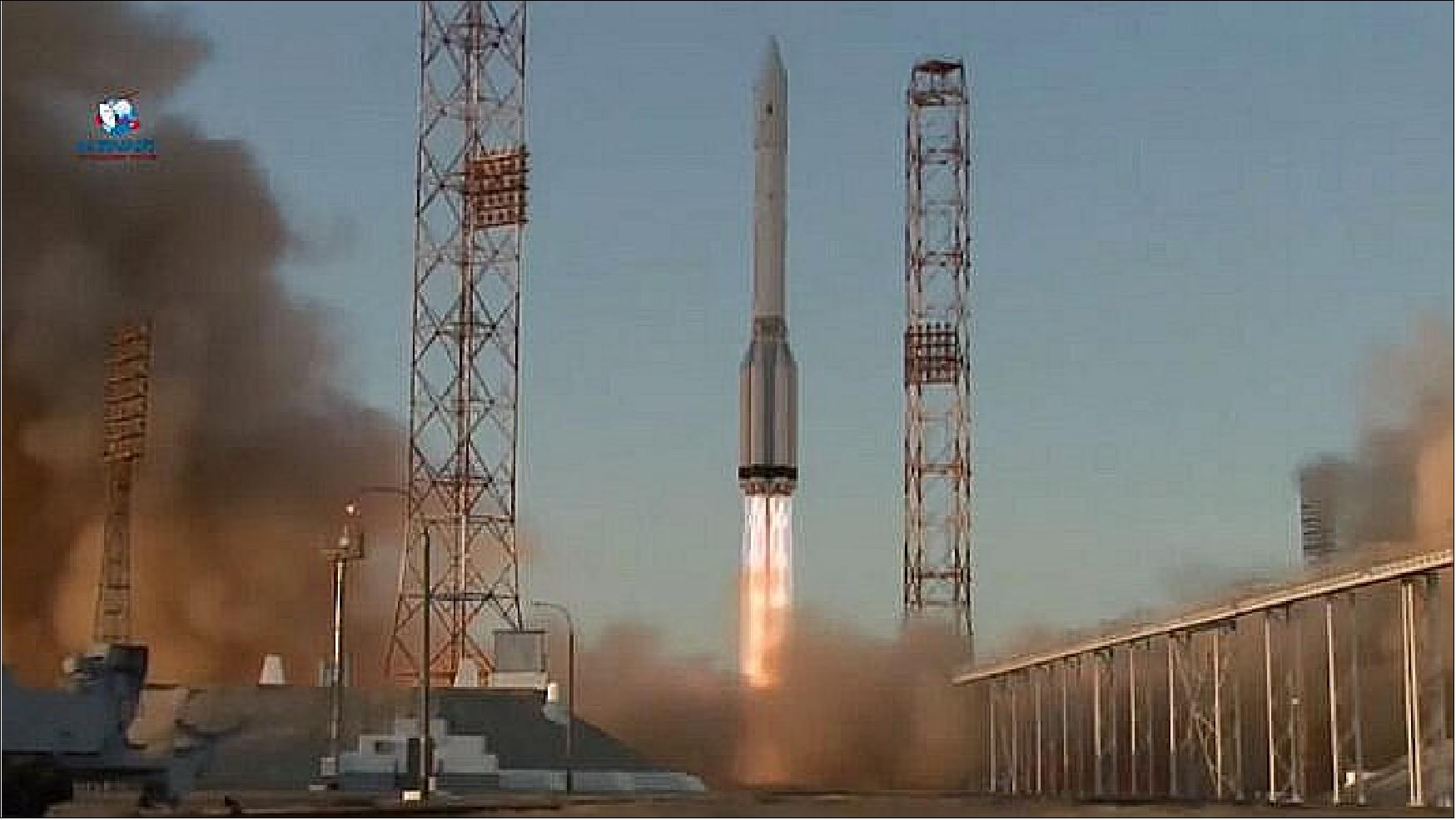
• July 21, 2021: After years of delays, Russia launched a new multipurpose laboratory module named Nauka to the International Space Station on Wednesday from Kazakhstan. 8)
- Besides a laboratory, whose name means "science" in English, the 20-ton, 43-foot-long module has a living area for one additional Russian crew member, a second toilet for the cosmonauts aboard the space station, additional oxygen generation and urine recycling capacity. Eventually, it will be used as an airlock for spacewalks.
- "This is the first time a Proton rocket ... launched a module to the International Space Station since the launch of the Zvezda module 21 years ago," a NASA mission control announcer in Houston said during a live broadcast of the launch.
- The Nauka MLM (Multipurpose Laboratory Module) will spend the next eight days boosting its orbit to reach the space station, which is about 400 km high.
Arrival of Nauka MLM at the ISS
• July 29, 2021: The uncrewed Nauka MLM (Multipurpose Laboratory Module) arrived at the Space-facing side of the Russian segment of the ISS at 9:29 a.m. EDT, eight days after lifting off from the Baikonur Cosmodrome in Kazakhstan. 9)
Nauka will serve as a new science facility, docking port, and spacewalk airlock for future operations.
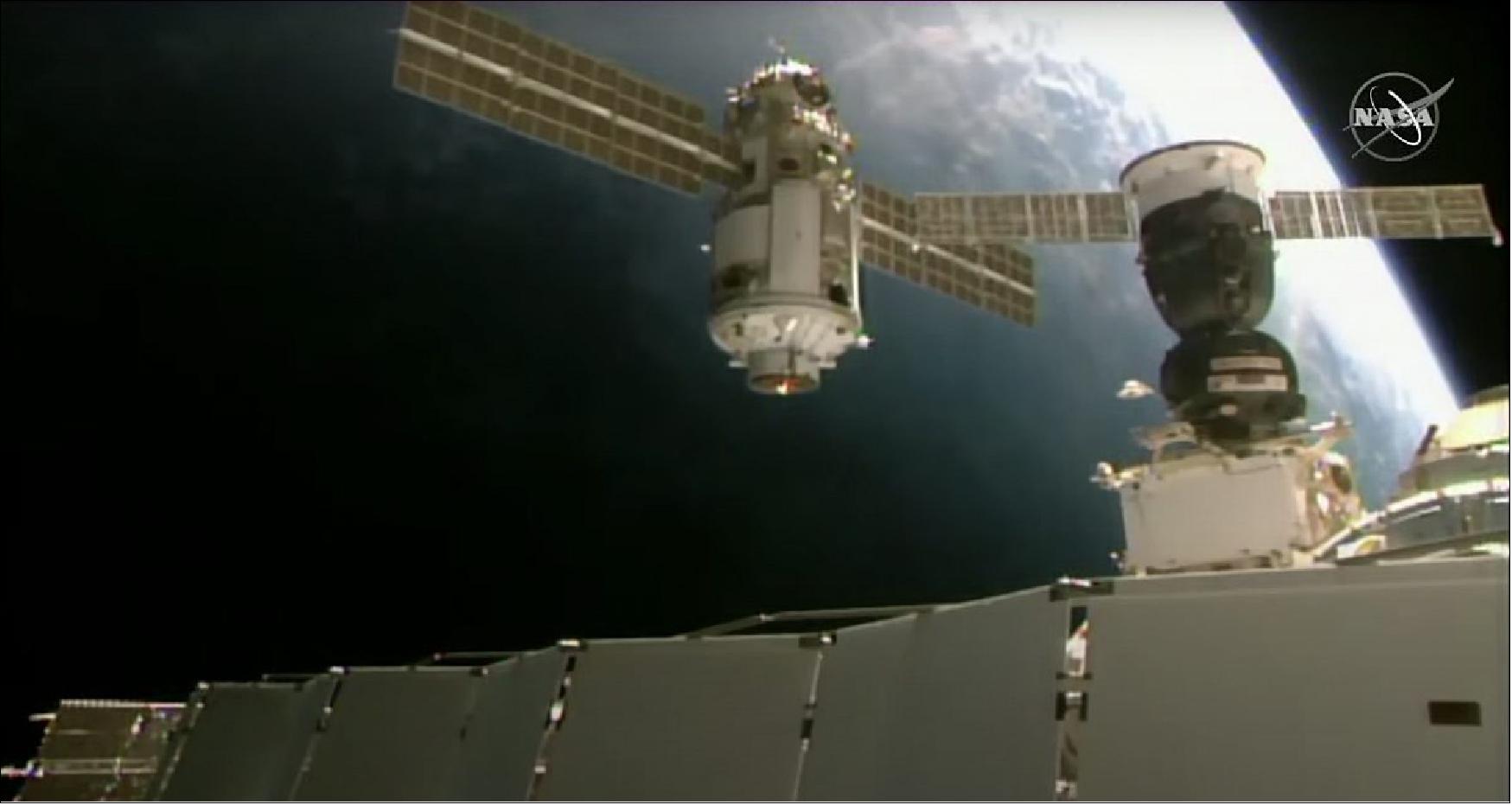
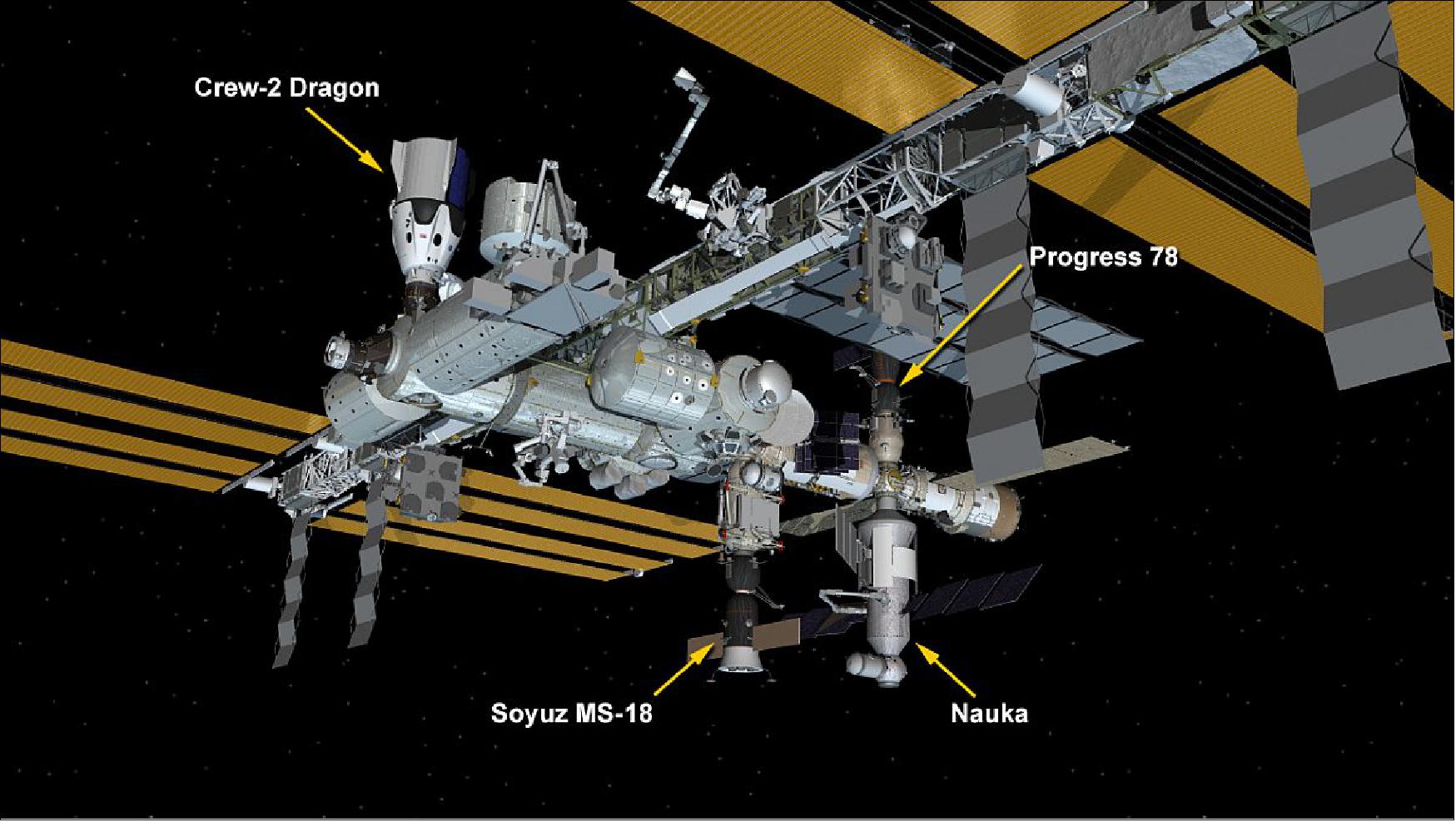
Following the docking of the Multipurpose Laboratory Module (MLM), named Nauka, to the International Space Station at 9:29 am EDT, Russian cosmonauts aboard the space station conducted leak checks between Nauka and the service module. 10)
• July 29, 2021: The Russian Nauka module that docked to the International Space Station July 29 started firing its thrusters hours later, briefly knocking the station out of its normal attitude and forcing NASA to delay a commercial crew test flight that was scheduled to launch July 30. 11)
- At about 12:34 p.m. EDT, Nauka started firing its thrusters for unknown reasons. That caused the station to lose attitude control eight minutes later, moving as much as 45 degrees out of alignment before the thrusters on Zvezda and a Progress cargo spacecraft were able to halt the drift. Russian controllers were able to turn off Nauka’s thrusters and the station’s attitude control was restored at 1:29 p.m. EDT.
- The problem, while serious, did not pose a threat to the safety of the seven people on board. “There was no immediate danger at any time to the crew,” Joel Montalbano, NASA ISS program manager, said in a call with reporters a few hours after the incident. Flight controllers, he added, train regularly for contingencies like this, and worked quickly to resolve the problem.
- Station controllers in both Houston and Moscow were still working to understand what caused Nauka to fire its thrusters, although Montalbano said Russian controllers had “inhibited” the thrusters to prevent them from firing again. The station was drifting at up to half a degree per second, mostly in pitch, a rate he said made him “not too worried” although analysis of the effects of the thruster firings continue.
- Montalbano said he didn’t know how much propellant the station used to restore attitude control, but that it didn’t deplete the station’s reserves. “We didn’t use anything that I would be worried about,” he said. “It was obviously more propellant that we wanted but nothing that I’m worried about.”
- Station crewmembers reported around the time Nauka was firing its thrusters that they may have spotted some debris floating away from the station. However, there is no evidence of any damage to the station, and Montalbano said the crew may have seen “flakes or something” from the thrusters themselves.
- He said engineers expected to have a “quick look” analysis of the station done by the end of the day July 30, while controllers worked to reconfigure Nauka. Russian cosmonauts on the station were preparing to open the hatch to the module around the time the thrusters fired but had not yet entered the module.
- Nauka launched July 21 on a Proton rocket. Immediately after reaching orbit, the module suffered several technical problems, including with its propulsion system, that caused some to worry about its ability to safely dock with the station. Russian controllers were able to resolve those issues and went ahead with the removal of the Pirs airlock module, which occupied the port Nauka was to dock with, July 26.
- With the investigation into the unplanned thruster firing continuing, NASA decided to postpone the scheduled July 30 launch of Boeing’s CST-100 Starliner commercial crew vehicle on a second uncrewed test flight, called Orbital Flight Test (OFT) 2. The launch of OFT-2 on an Atlas 5 is now scheduled for no earlier than Aug. 3 at 1:20 p.m. EDT.
- “Right now Starliner and the Atlas are ready to go,” Steve Stich, NASA commercial crew program manager, said at the briefing. The Atlas 5 carrying Starliner rolled out to the pad earlier in the day and the teams were working no issues with the spacecraft or launch vehicle.
- However, he said NASA decided it was better to resolve the situation on the ISS first before launching OFT-2. “We want to ensure the space station is in a stable configuration and ready for Starliner to arrive,” he said. “One of the reasons that we deferred the launch opportunity is, it just doesn’t make a lot of sense to send another vehicle station’s way.”
- NASA has reportedly considered shifting the launch to July 31, a date that it had previously ruled out because of classified activities on the Eastern Range, but Stich said at the briefing that NASA was not planning a launch on July 31.
- Montalbano, in the briefing, took pains to downplay the incident. “When you exhaust all your contingency plans, that’s when you start to worry,” he said. “And today we just weren’t there.”
ISS Preparations for the Docking of Nauka MLM
• July 26, 2021: For nearly 20 years, Russia's Pirs docking compartment served as one of the primary ports for vehicles arriving and departing from the International Space Station. On Monday (July 26), though, it was the module's turn to go to make way for a long-awaited, incoming upgrade. 12)
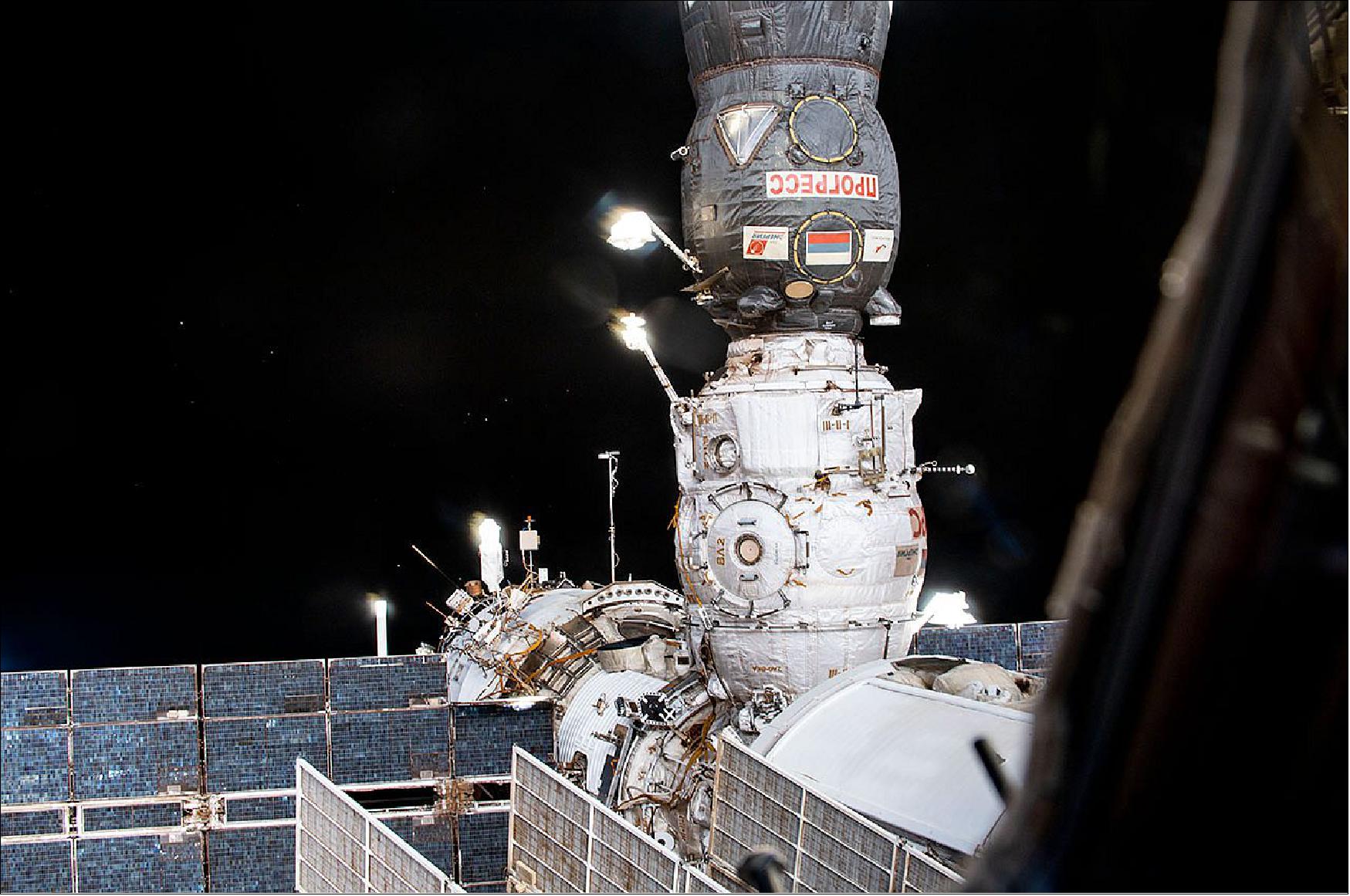
- The Pirs docking compartment undocked from the space station at 6:55 a.m. EDT (10:55 GMT) and was slowly pulled away by the last Progress cargo spacecraft to dock to it. The departure, from the nadir, or Earth-facing side of the Zvezda service module on the station's Russian segment, marked the first major component of the orbiting complex to be decommissioned and discarded.
- The 5m (long) x 2.5 m (diameter) Pirs, linked to the Progress MS-16 (77P) spacecraft, backed away from the station under the control of the cargo craft's engines. The uncrewed freighter was scheduled to perform a deorbit burn at 10:01 a.m. EDT (14:01 GMT), sending it and Pirs back to Earth to be destroyed on their re-entry over the Pacific Ocean about four hours after they left the station.
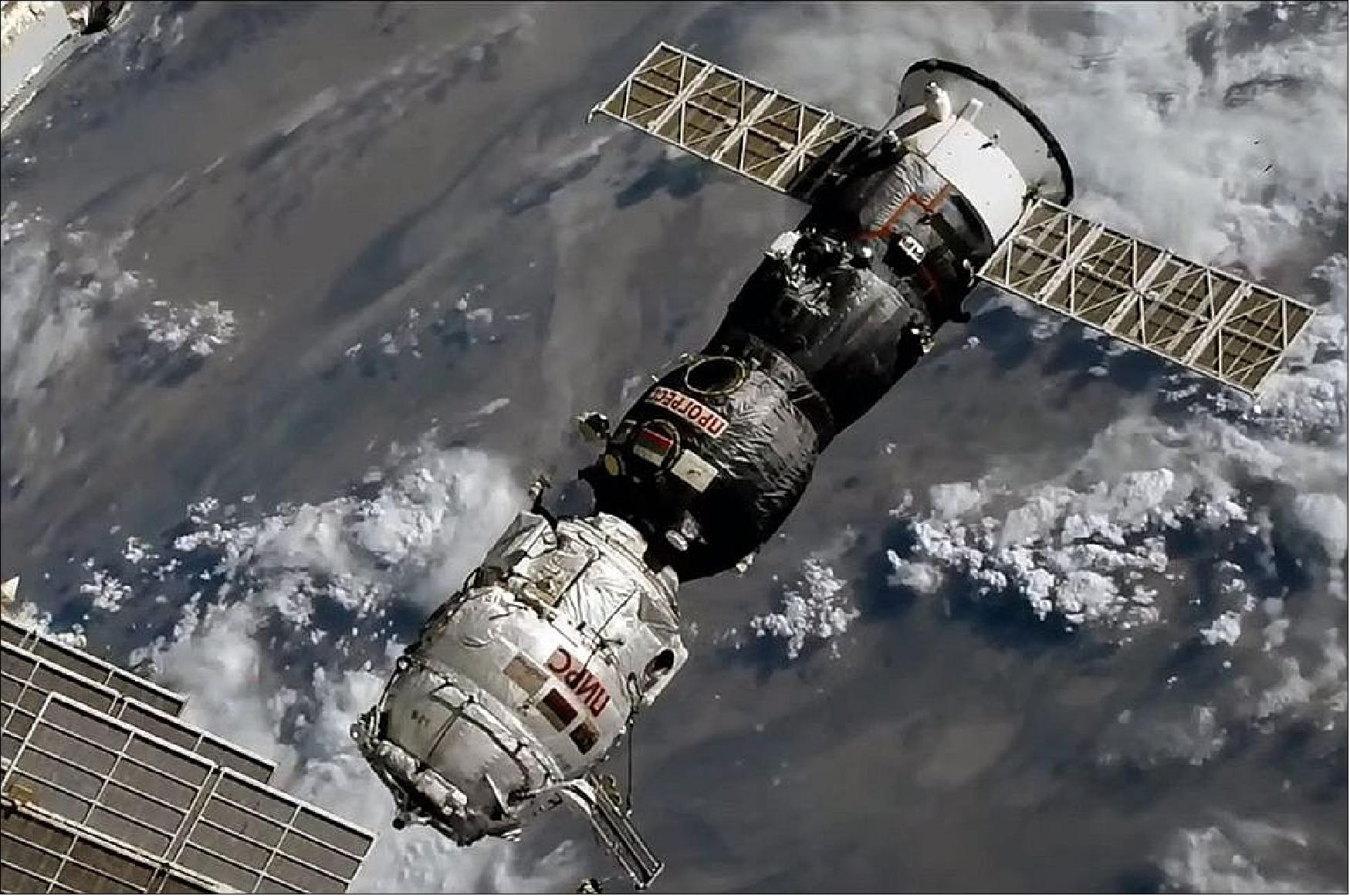
- With the port on the Earth-facing side of the Russian segment station vacated by the departure of Pirs and Progress, Russia’s Multipurpose Laboratory Module (MLM) is scheduled to dock at the station Thursday, July 29. It will serve as a new science facility, docking port, and spacewalk airlock for future operations.
- The disposal came five days after Roscosmos, Russia's state space corporation, launched Pirs' replacement: the multipurpose laboratory module (MLM) named "Nauka" (the Russian word for "science"). Delayed by more than 13 years due to a series of technical issues and budget constraints, Nauka will serve as a research facility, docking port and spacewalk airlock.
- The new module, which is based on the design of the station's Zarya functional cargo block (FGB), is scheduled to dock to the Pirs-vacated port on the Zvezda service module on July 29 at 9:25 a.m. EDT (13:25 GMT). Russian flight controllers had originally planned for Pirs to undock on Thursday (July 22), but delayed it four days to allow more time to ensure the Nauka MLM was operating in Earth orbit as needed to safely connect to the space station.
- The Pirs docking compartment was launched from the Baikonur Cosmodrome in Kazakhstan on Sept. 14, 2001, with a modified Progress as the upper stage of its Soyuz-U rocket. Three days later, it linked up with Zvezda, becoming the sixth pressurized module to be added to the space station.
References
1) Anatoly Zak, Alain Chabot, ”MLM Nauka to expand the International Space Station,” Russian Spaceweb.com, 23 June 2021, URL: http://www.russianspaceweb.com/iss_fgb2.html
2) Chris Gebhardt, ”Russian duo complete decommissioning of Pirs ahead of removal from Station,” NASA Spaceflight.com, 2 June 2021, URL: https://www.nasaspaceflight.com/2021/06/pirs-decommissioned-eva/
3) Stephen Clark, ”Russia’s long-delayed space station research module arrives at launch base,” 25 August 2020, URL: https://spaceflightnow.com/2020/08/25/
russias-long-delayed-space-station-research-module-finally-arrives-at-launch-base/
4) ”European Robotic Arm installation on Nauka,” ESA Science & Exploration, 23 June 2021, URL: https://www.esa.int/About_Us/Week_in_images/Week_in_images_21_-_25_June_2021
5) ”European Robotic Arm Installed on the Nauka MLM,” Russia News, Space, 20 May 2021, URL: https://dfnc.ru/en/kosmos/european-robotic-arm-installed-on-the-nauka-mlm/
6) ”New Space Station Module Launched to the International Complex,” NASA, 21 July 2021, URL: https://www.youtube.com/watch?v=g71kKHw4PcY
7) https://www.youtube.com/watch?v=3Z7aYnZK1fs
8) ”Russia launches Nauka module to space station after years of delay,” Space Daily, 21 July 2021, URL: https://www.spacedaily.com/reports/
Russia_launches_Nauka_module_to_space_station_after_years_of_delay_999.html
9) ”New Module Successfully Docks to Space Station,” NASA Blog, 29 July 2021, URL: https://blogs.nasa.gov/spacestation/2021/07/
10) Norah Moran, ”Space Station Stable After Earlier Unplanned MLM Thruster Firing,” NASA blog, 29 July 2021, URL: https://blogs.nasa.gov/spacestation/2021/07/
11) Jeff Foust, ”Station loses attitude control after Nauka docking, Starliner launch delayed,” SpaceNews, 29, 2021, URL: https://spacenews.com/
station-loses-attitude-control-after-nauka-docking-starliner-launch-delayed/
12) Robert Z. Pearlman, ”Russia discards Pirs docking port to clear way for new space station module,” Space.com, 26 July, 2021, URL: https://www.space.com/russia-pirs-docking-port-departs-space-station
The information compiled and edited in this article was provided by Herbert J. Kramer from his documentation of: ”Observation of the Earth and Its Environment: Survey of Missions and Sensors” (Springer Verlag) as well as many other sources after the publication of the 4th edition in 2002. - Comments and corrections to this article are always welcome for further updates (eoportal@symbios.space).
Nauka Development European Robotic Arm Launch References Back to top